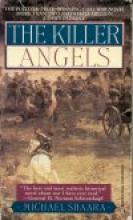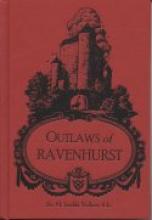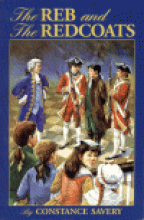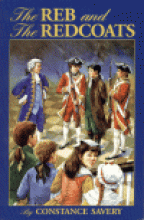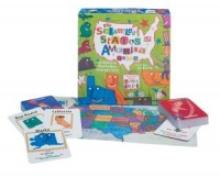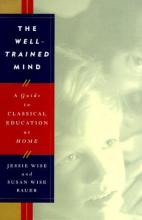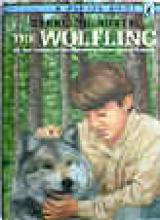United States
The Killer Angels
What is remarkable about this book is both the completeness of the picture we are given of the importance and complexity of the battle and the humanity of its key players. It is surprisingly unbiased toward either side, instead focusing on understanding the multitude of motivations that influenced the key players. The book contains twenty-three chapters. Each chapter tells a piece of the story from the point of view of different characters (a number of the characters have more than one chapter - four chapters are from General Lee's point of view, six chapters are from Colonel Chaberlain's point of view, etc.) The author seems to take special care in elaborating upon the South's General Longstreet and the North's Colonel Chamberlain.
High school students and adults will come away from this book with a much fuller sense of the gravity and scope of the civil war. It is intense, although not overly graphic and does contain some coarse language (which is both realistic and not overdone).
Note: The recent movie, Gettysburg, is based on this book and is quite good. It is remarkably non-gory without destroying the necessary sense of reality. I would recommend reading the book first as it provides some details not shown in the movie and makes it much easier to follow the multitude of characters. My one caveat is that I didn't care for the way General Lee was portrayed in the movie. They left out some important details that would have affected his admittedly poor decisions (namely his bad health) and in general, I found Martin Sheen's portrayal too buffoonish and undignified in contrast with the book.
The Outlaws of Ravenhurst
The story is Catholic through and through, but the characters are so real and the enemies are not exaggerated. I was pleased to see that not only are Protestants not demonized, but seen as fellow-sufferers (however misguided) under corrupt men . The action will keep you on the edge of your seat while surprises await you at every turn. My children and I really enjoyed this story as a read-aloud.
Donated for review by Lepanto Press.
The Reb and the Redcoats
I found this book full of living examples of the many virtues that make up an honorable person (honesty, loyalty, integrity, desire to learn, courtesy, etc.) and yet also just plain enjoyable. The style includes glimpses into human nature that make you laugh when you unexpectedly recognize them.
The Reb and the Redcoats
This is one of the most delightful stories I've read in a long time. Although it is recommended for ages 10 and up, our entire family enjoyed this story immensely. Not only is it a very enjoyable and well-told tale (with accurate historical details), but there are some very nice lessons tied into the story about how we should treat other people and how easy it is to misjudge.
The Scrambled States of America
The games involves two decks of cards - a state deck and a "scramble" deck. Players bring states "home" by following instructions on the "scramble" deck. These instructions involve things like: the state's color, letters or words found in the nickname, states that border that state and how many syllables in the capital. There are two levels of play. For younger children, anyone with a state matching the instructions on the "scramble" deck gets to bring that state "home." Older children can play a fast-paced version in which the first one to find a qualifying state gets to bring it "home."
The illustrations are a little "goofy" (each state is drawn with a face on it), but we found that our four children capable of playing (in our case, ages 5 1/2 through 12) enjoyed the game very much at their appropriate levels. I think the children practice valuable skills - searching for states on their maps, identifying attributes and learning about syllables (to name just a few).
You know it's a good game when children and adults both enjoy playing it!!!
Copyrights 2002-2005
For 2 to 4 players, ages 8 and up.
Two card decks with a simple 8 1/2 x 11 paper map for each player
The Sign of the Beaver
This is a story about a twelve year old boy named Matt who lived in Maine about 250 years ago. Near the beginning of the story, all of Matt's family (besides Matt) went away. One day he was fishing when a bear took a lot of Matt's food. The next day he was going to try to get a spoon of honey from a bee's hive. The spoon wasn't small enough to fit in the hole; neither was his finger. So he pulled a piece of the bark from above the hole and the bees came out and chased him to a river. So he went into the water and later he felt himself coming up because an Indian pulled him out of the water. The Indian had a grandson named Attean. Attean was about 14 years old. Attean's grandfather wanted Matt to teach Attean how to read. The book they started on was Robinson Crusoe. Matt and Attean became friends and they had lots of adventures.
I like the Sign of the Beaver so much that I'd like to listen to it lots more times.
2 cassettes, 3 hours 9 min
Reviewer age 7
The Story of the Pony Express
Various editions available
The Well-Trained Mind
Jessie Wise started homeschooling her daughter (and co-author Susan Wise Bauer) in 1973. In this book they elaborate ideas and resources for a complete classical curriculum from preschool through high school. From a Catholic standpoint, I think this book would be most useful for those who are already using Designing Your Own Classical Curriculum, but looking for additional ideas. I found the explanations of the stages of the Trivium very helpful as well as some of the ideas for types of writing assignments, lists of subject material and tidbits on scheduling and record-keeping. I also found the order in which certain materials are to be studied (particularly for History which they recommend studying in chronological fashion starting in first grade) to be more to my liking than the order proposed in Designing Your Own Classical Curriculum because I'd like to have my children studying the same topic in History at the same time. The authors had some important things to say about the problems with television and I really enjoyed (as a bit of a vindication of my own educational ideas I suppose) the story about Dr. Seuss and why he wrote The Cat in the Hat.
I would be reluctant to give this book to a mother who is already feeling overwhelmed with homeschooling or one who has just pulled her children out of a conventional school and is beginning to homeschool later in the game. Although it is not intended to be, I think it might be intimidating at this stage. Although the authors (who are not Catholic) don't fall into a number of "traps" regarding the Catholic Church that one might expect (as is clear from their segment on Religion), some of the resources (especially with regards to History) contain biases against the Catholic Church and should be used only with caution. A great deal of their recommended materials are those recommended by Greenleaf Press and/or published by Dorling Kindersley - I use materials from both of these sources, but many should be approached with caution if not avoided altogether.
I have not read the book in its entirety yet (I finished the Grammar segment and skimmed the rest). Overall, I found it worthwhile reading, but not "required reading", and some things should be taken with a grain of salt.
You can find out more about the book at the Well Trained Mind website run by co-author Susan Wise Bauer.
The Wolfling, A Documentary Novel of the Eighteen-Seventies
The bottom line of the story is that the main character, Robbie, must figure out who he is, and what he wants to do with his life. He comes to discover this through his relationships with both virtuous and morally suspect people who live in his town, and through his relationship with his mother and father, who are going through a similar discernment. Robbie learns how to deal with the morally suspect characters without condoning their actions, while emulating the virtuous characters. His parents are portrayed are virtuous, hard working people who must deal with the hardships of life on the frontier, the hardest of which is the loss of several children. Robbie makes virtuous choices, and in that, the book is a good choice for young adolescents.
North weaves actual historical events and real historical characters into the story and in some ways this is the most interesting part of the story. He spends a good deal of time introducing the reader to Thure Kumlein, a Swedish naturalist who is largely unknown, but made great contributions in natural history research at the time. If I lived in Wisconsin I would be seeking out his works and trying to travel to the part of Wisconsin where this story takes place.
In the back of the book, North gives scientific and historical information about the events described in the story. He describes the Panic of 1873 and the great Chicago fire as adeptly as he describes the habits of wolves in that region. Speaking of wolves, you might wonder why this review doesn't mention the wolfling so far. The dog is important as a plot device to move the story of Robbie's coming of age, but he is not central to the story. However, your more subtle readers may see an analogy between the wolfling and Robbie. The wolfling straddles two worlds, the wild and the tame, just as Robbie straddles much the same two worlds, the "wild" unruliness of the frontier, and the "tame" of schooling and civilization.
I couldn't help comparing this book to North's more widely acclaimed Rascal, and I like this one much better. In Rascal, North spends a lot of time "teaching" about his evolutionary and social philosophies. I had decided my children shouldn't read it until they were older, even though they would love all the outdoor exploits of the main character. I think that Wolfling is a better story with a better message. And, the best part as far as my children are concerned is that Robbie doesn't have to give up the wolfling in the end.

